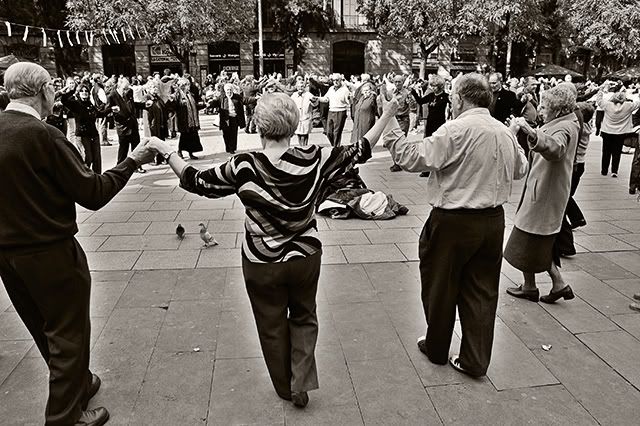What better to resume Barcelona Photoblog's posting than showing one of the leading figures in our festivities and an important member of the bestiari, a Catalan term to refer to a group of real and imaginary animals of Medieval origins mainly associated to Corpus processions. The lion represented Mark the Evangelist and the Eagle, Saint John. Both 'beasts' are also part of El Seguici de la Ciutat.
Together with the Eagle, the Lion (Lleó) is always presiding over the parades, especially during Corpus, La Mercè or Santa Eulalia. Our particular king of the jungle, or at least, the first impersonations made by men wearing costumes, date back to the fifteenth century and it is not till 1600s that it appears as it is today. He was completely gone during most part of the last century until his stellar reappearance back in the 90s. Franco's regime was not very fond of rescuing Catalan traditions.
Of course parading the animal is adorned by its own dance and music, The Dance of the Lion. There used to be roaring, many years ago, but Charles III forbid such ignominious noisy doings to the disillusionment of our citizens.
We have to thank local groups like Associació d'Amics dels Gegants del Pi for the initiative of bringing back the Lion in 1993.
Maybe some other day I write more about other fantastic beasts that run wild in our imagination thanks to the magic of our cultural heritage, the Catalan folklore. I leave you with the manes of a ferocious and yet gentle beast that I want to dedicate to all those born a Leo, like this humble blogger.
PS: Do not forget to visit La Casa dels Entremesos to see replicas of the bestiari.



